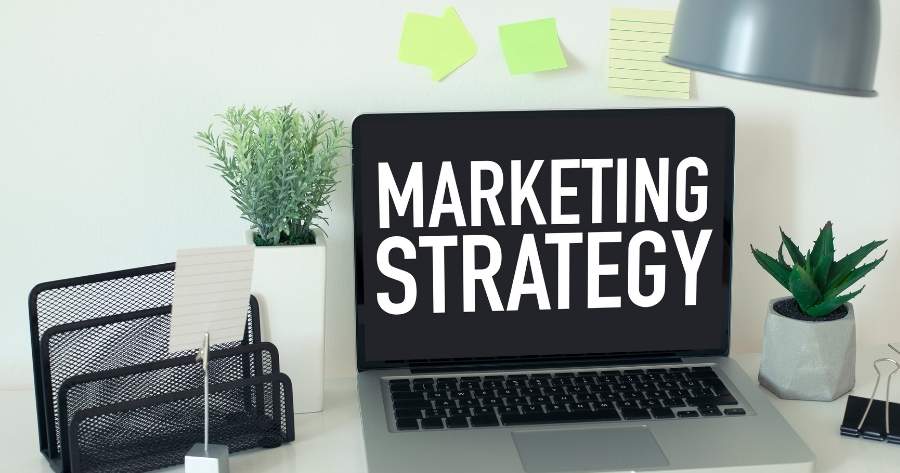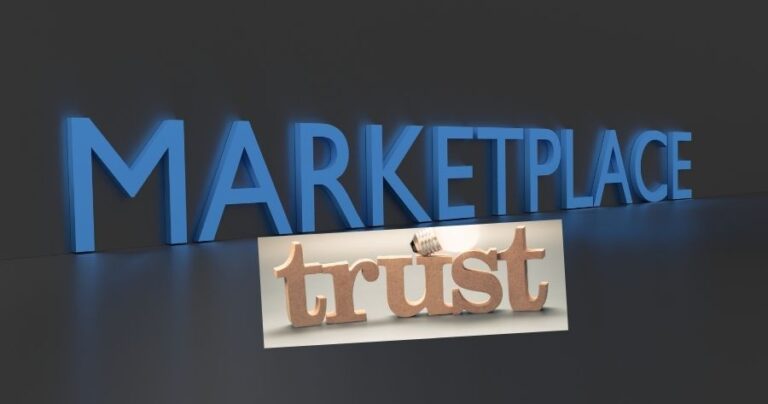
In today’s digital economy, online marketplaces have transformed the way people buy and sell. Platforms like Amazon, eBay, Etsy, Walmart Marketplace, and even niche-specific platforms have become essential for sellers who want to reach large audiences without building their own e-commerce websites from scratch.
However, there’s a challenge: competition is fierce. Thousands of sellers may be offering similar products, and without the right marketing approach, your listings can easily get lost in the crowd.
The good news? With the right strategies, you can stand out, attract the right buyers, and turn clicks into consistent sales. This guide will walk you through practical, tested marketplace marketing strategies that will not only boost your traffic but also drive real, sustainable sales.

What is an Online Marketplace?
An online marketplace is a platform where multiple independent sellers list their products for sale. These platforms handle key functions such as payment processing, customer service support, and sometimes even shipping, allowing sellers to focus on sourcing and selling products.
Examples include:
- Amazon – suitable for both brand owners and resellers.
- Etsy – best for handmade goods, vintage items, and craft supplies.
- eBay – ideal for collectibles, auctions, and second-hand goods.
- Walmart Marketplace – perfect for recognized brands.
- Niche Marketplaces – platforms like Poshmark (fashion) or Reverb (music gear).
Marketplace vs. E-commerce Store
Running your own e-commerce store offers more branding control but requires you to drive your own traffic from scratch. Marketplaces, on the other hand, already have millions of visitors searching for products, but you share space with competitors.
Marketplaces give you instant visibility, but you must be strategic to stand out.
The Psychology of Marketplace Shoppers
Understanding Buyer Intent
Not every shopper is ready to purchase immediately.
- Research Stage: Looking for options, reading reviews, comparing prices.
- Decision Stage: Actively choosing between two or three final products.
- Impulse Stage: Buying because of urgency, discounts, or emotional triggers.
Impulse vs. Planned Buyers
- Impulse Buyers: Attracted by urgency, strong visuals, and special deals.
- Planned Buyers: Require detailed specifications, warranties, and customer reviews.
Why Reviews Matter
Over 90% of shoppers read reviews before purchasing. Positive reviews create trust, while negative ones, if addressed professionally, can still build credibility.
Building the Foundation for Marketplace Success
Choosing the Right Marketplace
Your product type, target audience, and budget will determine the best marketplace for you. Research:
- Demand for your product.
- Competitor pricing.
- Seller fees and commission rates.
Crafting a Winning Seller Profile
Think of your seller profile as your brand’s storefront. Include:
- A professional logo or brand image.
- A clear, benefit-focused seller description.
- Proof of credibility such as “Top Rated Seller” badges.
Optimizing Product Listings
A product listing is your sales pitch. Make sure it:
- Has high-quality images showing different angles.
- Uses keywords in the title and description.
- Clearly states features, benefits, and specifications.
- Includes size guides, material details, and usage instructions where relevant.
Keyword & SEO Optimization for Marketplace Sales
How Marketplace Search Works
Marketplaces use algorithms (like Amazon’s A9, Etsy’s ranking system, or eBay’s Cassini) to decide which products appear first.
They prioritize:
- Relevance – keywords in title, description, and tags.
- Performance – sales history, reviews, and click-through rates.
- Pricing Competitiveness – value compared to other listings.
Finding the Right Keywords
Use tools like:
- Helium 10 – Amazon keyword research.
- eRank – Etsy search optimization.
- Ubersuggest or Google Keyword Planner – for general ideas.
Writing SEO-Friendly Titles
Example:
❌ “Bluetooth Speaker Black”
✅ “Portable Bluetooth Speaker – Waterproof, High Bass – Black Wireless Audio Device”
Image Optimization
- Use 1000px+ resolution images for zoom capability.
- Add lifestyle photos to show the product in use.
- Ensure a clean white background for the main image.
Pricing Strategies That Win Sales
Competitive Pricing
Study your competitors before setting your price. Underpricing can hurt your profits, while overpricing can scare away buyers.
Psychological Pricing Tricks
- Charm Pricing: $19.99 instead of $20.
- Anchor Pricing: Show a higher “original” price next to the discounted one.
- Bundle Deals: Increase order value by selling related items together.
Strategic Discounting
Offer discounts:
- During slow months.
- For seasonal clearances.
- For first-time buyers.
Building Trust and Credibility
Leverage Customer Reviews
Encourage happy customers to leave feedback. Follow up after delivery with a polite message.
Handle Negative Feedback Well
Respond quickly, offer solutions, and avoid defensive language. A well-handled complaint can turn into a repeat customer.
Be Transparent
Clearly state shipping times, return policies, and product limitations.
Advertising & Paid Promotions
Marketplace Ads vs. External Ads
- Marketplace Ads: Promote your listing directly on the platform (e.g., Amazon Sponsored Products).
- External Ads: Drive traffic from social media or Google Ads to your product page.
Setting an Ad Budget
Start small, measure your ROI, and scale what works.
Types of Marketplace Ads
- Sponsored product listings.
- Homepage banners (for bigger brands).
- Category-specific promotions.
Content Marketing for Sellers
Blogging
If you sell camping gear, write blogs about outdoor adventures, gear checklists, and product comparisons to attract buyers.
Social Media Funnels
Use Instagram, Pinterest, TikTok, or Facebook to drive visitors to your marketplace listings.
Short Videos
Create product demos, unboxings, and behind-the-scenes clips.
Influencer Marketing
Finding Influencers
Look for content creators whose audience matches your target market. Micro-influencers (1K–50K followers) are often more affordable and have stronger engagement rates.
Collaboration Models
- Free product reviews.
- Paid sponsored posts.
- Affiliate commission per sale.
Email & Retargeting Strategies
Building an Email List
While some marketplaces restrict direct email collection, you can add a thank-you card with a QR code linking to your sign-up page.
Retargeting
Use Facebook or Google Ads to show your products to people who already visited your listing but didn’t buy.
Seasonal & Trend Marketing
Trend Research
Use Google Trends to identify products that peak during certain times of the year.
Holiday Promotions
Prepare marketing campaigns for Christmas, Black Friday, and other shopping events.
Customer Service as a Sales Driver
- Great service builds loyalty.
- Fast responses
- polite communication, and
- efficient issue resolution encourage repeat purchases.
Scaling Your Marketplace Business
Once you’ve established consistent sales:
- Expand product lines.
- Sell on multiple marketplaces.
- Automate processes using inventory management software.
Conclusion
Selling on online marketplaces is one of the fastest ways to reach a massive audience, but visibility alone won’t guarantee sales. By optimizing your listings, building trust, leveraging ads and content marketing, and analyzing performance data, you can rise above the competition and create a sustainable income stream.
Frequently Asked Questions (FAQ)
1. What is marketplace marketing?
Marketplace marketing is the strategy of promoting products on online platforms like Amazon, eBay, Etsy, and Walmart Marketplace to attract buyers and drive sales. It involves optimizing product listings, using SEO, running ads, and building trust with customers.
2. How do I increase my sales on an online marketplace?
To increase sales:
- Optimize titles and descriptions with relevant keywords.
- Use high-quality product images.
- Offer competitive pricing.
- Run targeted ads within the marketplace.
- Encourage customer reviews for trust and visibility.
3. Which marketplaces are best for beginners?
For beginners, Etsy (handmade/vintage), eBay (general resale), and Amazon (broad audience) are good starting points. They offer built-in traffic and easy seller onboarding.
4. How important are reviews for marketplace sales?
Very important, over 90% of shoppers read reviews before buying. Positive reviews boost your ranking in search results and increase buyer confidence, while negative ones (if handled professionally) can also demonstrate good customer service.
5. Should I run ads on marketplaces or on social media?
Both have benefits:
- Marketplace ads target buyers already searching for similar products.
- Social media ads can attract new audiences and build brand awareness.
The most effective sellers often use a combination of both.
6. How do I choose the right price for my product?
Research competitor prices, factor in marketplace fees, and use psychological pricing (e.g., $19.99 instead of $20). Always test different price points to see what converts best.
7. Can I sell on multiple marketplaces at the same time?
Yes, and it’s often recommended to reduce risk. Use inventory management tools to keep stock synced across platforms so you don’t oversell.
8. What’s the future of marketplace marketing?
The future is moving toward AI-driven product recommendations, live shopping experiences, and sustainability-focused branding. Sellers who adapt to these trends early will have a competitive edge.





